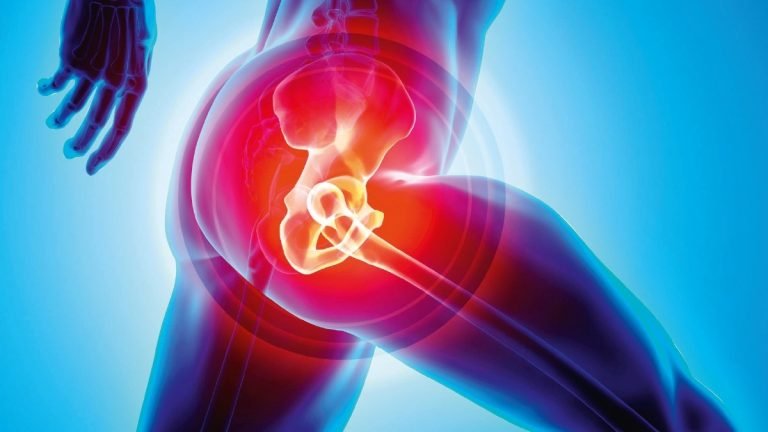The human body is a remarkable and extremely strong structure. However, this does not mean that the human body is indestructible. Overuse of body muscles and bones can result in serious injuries. Athletes often exert excessive force while playing sports. These injuries can be categorized into two parts: acute and chronic.
Injuries that occur instantaneously such as sprained ankles due to bad landing after jumping can be called an acute injury.
On the other hand, we have chronic injuries that occur due to repetitive motion which causes the muscles and joints to overstress and eventually giving up. Doing exercises the wrong way repeatedly can greatly increase the chance of chronic injuries to occur.
Ignoring minor pain and assuming nothing serious going on can be the biggest reason for sports injuries occurring. Injuries may be more serious than they appear to be.So, consulting your doctor is the best solution to avoid such injuries.
Countless people every year get injured while playing sports and receive multiple treatments. Being tired from working out is also a big factor in sports-related injuries. If the athletes are low on energy they might lose their balance while playing and perform some actions in the wrong motion. One wrong step will put a strain on the muscles and bones causing injuries. Regardless of gender both males and females often experience injuries in their ankles and knees. A few injuries like ACL injury are more common in women without any proper known reason but doctors think it’s due to hormonal differences.
Hip injuries in sports
According to hip replacement surgeons in Pakistan,the most common hip-related injuries are listed below.
Osteoarthritis
This chronic hip injury can be found in both normal people and athletes. Osteoarthritis is caused by overuse and damage to the hip joint as it is a type of arthritis. The cartilage in the hip socket gets wears down due to continuous use. As the cartilage wears down, the once smooth cartilage gets rough and causes problem in moving the leg. A lot of medications and treatments can be recommended by doctors in order to make things better. Physical exercises strengthen hip but in some cases hip replacement surgery is needed.
Fractures
This is not a very common fracture in runners. Fractures can be caused by an impact on the bones causing traumas on the bone. The treatment for such injuries is to let the bone rest under plaster and stop allowing further impacts to the bone.
Labra Tear
Sports accidents and excessive use of the hip joint can cause the labrum cartilage to wear off. Pain in the groin, rusty feeling, and uneasiness in moving legs are part of the symptoms. This can be treated with a lot of rest and medication with physical therapy. It can also be treated with arthroscopy.
Hamstring Pull
Hamstring pull is a common injury to athletes because it happens due to tough physical exercises. Running and falling can cause a hamstring pull. When an athlete gets a hamstring pull, the doctors decide the severity of the injury and provide treatment accordingly.
Hip replacement surgery in Pakistan
In this surgery, the doctor will remove the hip joint if it is painful and has arthritis and replaces it with a part identical to it made from plastic or metal. Hip replacement surgeons in Pakistan have tried this treatment for other joint pains but it is not as effective to reduce pain. This surgery will reduce pain and increase mobility back in the hip.
A hip replacement surgeon in Pakistan can perform this surgery through two different operations, traditional and minimally invasive. One of the big differences between these operations is the way the incisions are made.
Hip replacement surgeon in Pakistan often starts his or her procedure by giving anesthesia to the patient so the body can relax and no pain is felt during the incisions. This will put the patient in a sleep-like state making it easier to perform surgery. Anesthesia can be applied to different areas to reduce pain during the surgery like the spine.
The hip replacement surgeon in Pakistan cuts along the hip of the patent and work their way to the hip joint so the joint replacement can take place. Then the doctor will grab the ball joint and saw of the ball part from the thighbone. This part will then be replaced by an artificial part. It is attached to the bones through special adhesives so it can be sturdy. After the ball part is attached back the doctor will carefully replace the socket part of the joint. The new thighbone ball part is inserted into the hip’s socket. Any fluid can be drained with a drain. Then the doctor ties the muscles again and closes the incision.
Whilst many hip replacement procedures still use standard techniques in which 8 to 10 inches is cut down on the hip side, some surgeons have used a minimally invasive procedure in recent years. Doctors make one or two cuts from 2 to 5 inches long with the minimally invasive approach. This procedure is the same as the standard hip replacement procedure through these small cuts.
Small cuts are made to reduce blood loss, relieve pain from the following surgery, reduce hospital stays, reduce the appearance of the wound, and to accelerate healing.
It is important, however, that the surgeon is highly experienced in this method. Research has found that if a doctor who has little experience with this technique tries, the results can be worse than with standard hip replacement surgery.
Many good and experienced hip replacement surgeons in Pakistan can be found in known hospitals.
You may need a transfusion of blood, so donating your own blood before the procedure might be considered, as a result of the possible blood loss during the hip replacement operation.
The patient will be taken to the recovery room after the surgery to be observed. The patient will be taken to the hospital room when their blood pressure, pulse, and respiration are normal and they are safe. Usually, hip replacement operation requires them to stay several days in the hospital.
After surgery, it is important to start moving the new joint. Shortly after the surgery, a physiotherapist will meet them and plan a rehabilitation program for them. Their pain will be medically controlled so they can take part in their exercise. They will get a workout plan to follow in and after they are discharged from the hospital.
Once done, the patient is shifted to a rehabilitation center or to a house. In either case, the doctor arranges for physical rehabilitation will proceed until they recover strength and good movement.
It is important that the surgical area remains clean and dry once the patient moves back home. They may receive specific instructions for bathing from their health providers. During the follow-up office visit, stitches or surgical staples are removed.
They may take a pain reliever for soreness according to their medical professional’s recommendations. The risk of bleeding will require the intake of aspirin or some other painkillers. They should make sure they only take the recommended medicines.
If their healthcare provider advises them otherwise, they can return to their normal diet.
The patient is not allowed to drive until they are told by their healthcare provider. Certain tasks may need to be restricted. It may take several months for a complete recovery from surgery.
After hip replacement surgery, it is important to avoid falling. The new joint may be damaged by a fall. The healthcare professional may prescribe a support aid like a cane or a walker to help them walk while they regain their strength and balance.





